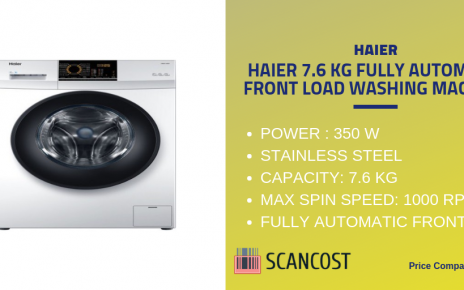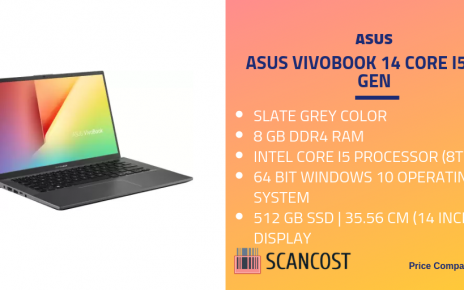This Air Conditioners (AC) buying guide provides very important details about AC’s, its type and components used in AC’s and other factors which may help the user to select ACs as per their requirement and budget.
AC or air conditioner is an electric machine that controls the temperature of the room according to user wish. The user just set a temperature, whether it is more or less than the actual one outside user room, and in a while, the user will get that precise degree of warmth.
How Air Conditioners Works
An AC works the same as the refrigerator or fridge in your house but in a larger space. The difference is, Fridge absorbs the heat from a small container, AC absorbs the heat from an entire room. Then it reduces the temperature with the help of ‘REFRIGERANT’. This chemical substance gets vaporized after absorbing some of the room heat, and the rest of the heat is ventilated through the exhaustion panel of the device.
Types of Air Conditioners
- Split AC
- Window AC
- Portable AC
- Inverter AC
Split AC
Split AC, it consists of two units. One unit mounted outside of the home and the other is mounted inside the room. The outside unit consists is a compressor and condenser and inside unit consists blower. Compressor connected to blower by a connecting pipe which passes through the wall. Compressor sucks air from outside and made it cool, then passes to the blower. Blower throws out the cold air into the room.
Advantages (Split AC)
1. Split AC is a good choice for the bedroom because split Ac makes less noise as its compressor and condenser are located outside which reduce the noise generation in the room.
2. It can be installed in anywhere in any room. No need to worry about the window, frame exists in a room.
3. Split AC adds style and good look to the room.
Disadvantages (Split AC)
1. Split AC usually expensive comparative to other AC types.
2. Shifting, reallocating Split AC is much hard work and expensive.
3. Sometimes requires a long tube to connect both units
Window AC
Window AC consists of one unit with a combination of compressor and blower within it. Window AC can be installed only in the window frame. Blower side of AC facing inside the room, whereas the back side is facing outside open air
Advantages (Window AC)
1. Very simple installation. Shifting, and reallocating window AC is much easier and fits in the budget.
2. No need to refill the gas in the compressor while shifting with Window Ac, whereas it needed with Split AC.
3. Economical, the Price range in India.
Disadvantages (Split AC)
1. Makes loud noise while running as compressor attached with blower and very close to room.
2. Installation is difficult if there is no exterior support
Portable AC
Portable AC is portable just like air cooler. Portable AC is can move from one room to another instantly whereas a window or split as can’t. It is a great solution for small houses and those who can’t afford AC in every room. Also, where centralized AC can’t be installed, portable AC is a great option.
Advantages (Portable AC)
1. Shifting and reallocation are easy.
2. No need for any skilled technician.
3. No need to stick in one room.
Disadvantages (Portable AC)
1. A portable AC is new in India, they are quite expensive as well as there are no well-known brand products available
2. The hot air exhaust adds the limitation to the “portable” air conditioner.
3. A bit noisy
Inverter AC
Inverter AC does not mean it runs on the inverter or it runs in electricity cuts. It uses an inverter technology, which uses to convert AC current to DC current which further regulates the compressor running speed.
Traditional non-inverter air conditioner compressor motor sometimes goes “ON” and “OFF”. Whereas, inverter AC compressor is always in “ON” state. Although the inverter AC compressor is always ON, it saves electricity a lot. When we switch to non-inverter AC, its compressor motor starts running at high speed to cool the room at the desired temperature. After reaching the desired temperature, it stops the compressor motor. When room temperature increases, it starts the compressor again. The compressor is gone “ON” and “OFF” again and again.
Whereas. The inverter AC compressor motor is always “ON”. When the switch on the inverter AC, its compressor motor starts running at high speed to cool the room at the desired temperature. After reaching the desired temperature, it not stops the motor, instead, it runs motor with minimal speed so that room temperature constantly maintained at the desired temperature.
When the air conditioner compressor motor goes ‘ON’, it consumes peak level electricity. So traditional non-inverter AC whose mother goes ‘ON’ and ‘OFF’, obviously consumes more electricity. The inverter AC motor is always “ON” so there are no electricity peaks and save electricity a lot. It looks the same as split AC
Advantages (Inverter AC)
1. Better cooling with less power consumption
2. A better life of AC components
3. Built-in inverter adjusts the power supply, thus no fluctuation in electricity
Disadvantages (Inverter AC)
1. Repair is expensive.
2. More expensive than normal ACs
Conclusion
Now, these were the necessary information on air conditioners to help the user to select ACs as per their requirement and budget. You can now check the best price for your choice of AC at SCANCOST Link






